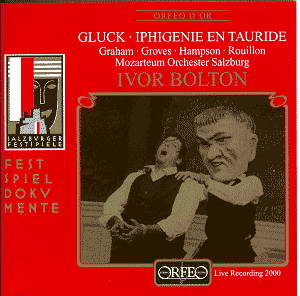 Composer: Alfred Genovese
Composer: Alfred Genovese
Works: Schumann – 3 Romances op. 94 for Oboe and Piano; Poulenc – Sonata for Oboe and Piano; Ibert – Escales, no. 2; Loeffler – 2 Rhapsodies for Oboe, Viola and Piano; Mozart – Quintet in Eb for Piano and Wind, K. 452
Performers: Alfred Genovese, oboe; Peter Serkin, piano; Robert Spano, piano; Burton Fine, viola; Harold Wright, clarinet; Richard Sebring, horn; Richard Svoboda, bassoon
Recording: Recorded at South Mountain Concert Hall, Pittsfield, MA, August 1992
Label: Boston Records BRI1004CD
Alfred Genovese, a distinguished oboist and principal player in the Boston Symphony Orchestra, offers a compelling exploration of the oboe repertoire in this recital that traverses both well-trodden and rarer paths. The selections, spanning from Schumann’s lyrical Romances to Mozart’s jubilant Quintet, not only showcase Genovese’s artistry but also provide an interesting juxtaposition of historical styles and emotional landscapes. Each work illuminates different facets of the oboe’s expressive potential, while the collaboration with esteemed musicians adds depth to the overall presentation.
The performance of Schumann’s Three Romances op. 94 stands as a central highlight, encapsulating the Romantic idiom’s intimacy and expressiveness. Genovese’s interpretation leans toward the lyrical, emphasizing the almost melancholic quality inherent in the oboe’s timbre. However, the choice to present all three movements consecutively without a contrasting piece may result in a sense of monotony. Each piece, while beautifully executed, could benefit from a greater dynamic contrast and a more varied emotional palette to sustain engagement throughout. The recorded sound presents challenges here; the piano, played by Peter Serkin, emerges too prominently in the mix, somewhat overshadowing the oboe’s delicate nuances. This imbalance detracts from the subtle interplay that is essential in chamber music, where each instrument must weave its voice into a cohesive tapestry.
Poulenc’s Sonata for Oboe and Piano further showcases the oboe’s versatility, contrasting the introspective nature of Schumann with an engaging blend of wit and poignancy. Genovese’s phrasing in the first movement captures the languid charm that is characteristic of Poulenc’s style, yet the performance lacks the vivacity and rhythmic precision that could elevate it to a more compelling interpretation. The recording captures the sonorous beauty of the oboe, but the slightly distant placement of Genovese in the soundscape again hampers the clarity of his articulation, particularly in the more intricate passages. Nonetheless, the lively finale displays promising moments where the oboe and piano engage in a spirited dialogue, revealing the potential for a more dynamic execution.
Turning to the Loeffler Rhapsodies, the rarity of these works in the UK repertoire offers an intriguing insight into early 20th-century American music. However, despite the unique instrumentation of oboe, viola, and piano, the pieces come across as somewhat uninspired, lacking the full exploration of tone colors that this combination could achieve. The performance feels constrained, with Genovese’s expressive capabilities somewhat stifled by the subdued nature of the compositions. Compared to the vibrancy found in the selections of Schumann and Poulenc, the Loeffler works appear colorless, overshadowed by the emotional weight of their more illustrious counterparts.
Mozart’s Quintet in Eb for Piano and Wind, K. 452 concludes the recording on a more satisfying note, presenting a rich interplay among the ensemble. Here, the collective musicianship shines through, with each wind player contributing to the delightful texture of the piece. The lively finale is particularly engaging, demonstrating a more cohesive ensemble dynamic. Nevertheless, Serkin’s piano part, particularly in the slower sections, could benefit from a lighter touch to contrast the buoyant spirit of the wind instruments, allowing for the interplay to emerge more organically.
The recording quality presents a mixed bag; while the overall clarity is commendable, the imbalance in the ensemble’s sound and occasional extraneous noise—such as the chirping of nearby crickets—distracts from the listening experience. These technical aspects, combined with the interpretive choices made, create an uneven listening experience that prevents the recital from fully realizing its potential.
The interplay of strengths and weaknesses throughout the recording presents a complex portrait of Genovese as both a soloist and collaborator. While the interpretations of the Schumann and Poulenc pieces exhibit moments of beauty, the overall execution often feels restrained, hindered by the recording balance and interpretive choices. The Mozart Quintet, however, offers a glimpse of the ensemble’s capabilities, highlighting what could have been achieved with a more adventurous approach throughout the disc. This collection, while containing noteworthy performances, ultimately leaves the listener yearning for a deeper engagement with the music.



